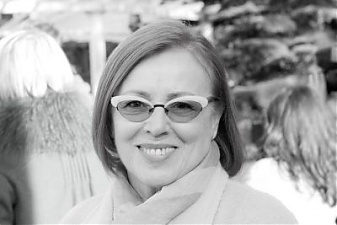Analytics, Direct Speech, Education and Science, EU – Baltic States, Integration, Latvia, Legislation
International Internet Magazine. Baltic States news & analytics
Tuesday, 30.12.2025, 09:24
The Baltic States and Social Integration
 Print version
Print version |
|---|
Over 25 years of independence in three Baltic States the issues of social integration have been solved. The process is complicated. Boundaries divide the native population and those who happened to inhabit Estonia, Latvia and Lithuania during the USSR occupation. The split in society has not been overcome yet.
The major issue is citizenship. Each of these countries solved this problem on its own. Already in 1993, Lithuania took the most reasonable decision, so-called “zero variant”, offering citizenship to all inhabitants. In Estonia and Latvia, lawmakers chose a different path to go — granting citizenship only to those whose predecessors had lived in the countries before 1940, in principal, to native population. All others received the “alien” status, which was most painfully perceived in Latvia as here the number of non-citizens amounted to 700 thousand. These are mainly Russian-speaking people, deprived of the voting right at the parliament and municipal elections, as well as of access to certain professions. Regardless a statutory possibility to acquire citizenship by passing the language and Latvian history exam, over the years of independence citizenship has been acquired by 142.6 thousand people. So far due to various reasons 262.6 thousand people remain “alien”. This state of things is being employed by all kinds of politicians during their electoral campaigns. Leading political parties are also divided under the principle of the language belonging, no matter how hard they try to hide it. Even a social organisation “The Congress of Non-citizens” was established. One thing is obvious this situation does not encourage the unity of Latvian society.
Another important issue of social integration lies in education. In Latvia, around 40% of population are so-called Russian-speaking people. The system of school education that is based on the division into Russian and Latvian schools and preserved since the Soviet times has little changed. According to the law at schools of indigenous minorities, 60% of school subjects have to be taught in the official language. However, in reality, with the existing staff of teachers who have been working at schools since the Soviet times and who are not fluent in Latvian, Russian school-leavers do not speak the official language fluently. In its turn, it prevents them from studying at state universities where studying is possible in Latvian. As a result, a lot of private higher education institutions with teaching in Russian has mushroomed. In part, Russian as a school subject has almost disappeared from Latvian schools. Latvian schools’ graduates lose their competitiveness in the areas of transit, tourism and finance that require fluency at least in three languages: Latvian, Russian and English. However, at the same time, business environment, being most tolerant in this issue, is ready to invest in teaching languages to employees.
The absolute majority of politicians along with the population nowadays support the idea of dividing schools under the language principle. Just over a year ago, we introduced the idea of united national school instead of turning Russian schools into Latvian ones. The idea of establishing a united school at which both Latvian and Russian forms would coexist together was taken on board by one of new opposition parties before the election to the Saeima. The idea of a school at which children of various nationalities would be able to communicate on everyday basis bringing cultural peculiarities to their intercourse. However, this idea remained on paper.
Another watershed is mass media. Over the years of independence, public television and radio have been broadcasting mostly in the official language still uncomprehended by the significant part of population. Private TV and radio channels broadcast in Russian insufficiently due to the lack of finance. This vacuum is filled with Russian television that is widely broadcasted by commercial providers. Around a year ago, just before the election to the Saeima, the issue of widening the broadcasting in Russian on public television was raised. Analytical programmes and morning news came on air. However, already in several months, the morning news programme was closed. Then a new idea occurred — to create an independent national TV channel with broadcasting in Russian that requires large resources, both financial and human. Neither of them is available in Latvia. In our opinion, it would be logical if programmes on public television would be broadcasted in both widely spoken languages in Latvia, either by way of simultaneous interpretation or news tickers. Consequently, a united information environment would be created and people would be able to learn more about how both societies live in Latvia.
Today, even the authorities admit that the plan of social integration in Latvia has failed. The previous president Andris Berzins tried to improve this situation for what he faced criticism from the ruling forces. In the opening speech, a new president Raimonds Vejonis highlighted that “in Latvia the lack of unity in society is being widely discussed. However, we do not have to encourage this discord ourselves.” Time will show whether he succeeds in implementing profound changes in uniting two communities.
O. Pavuk. The Baltic States and Social Integration. Baltic Rim Economies Review/University of Turku.Turku School of Economics Pan European Institute/ Issue # 4/ October –2015. Finland. ISSN 1459-9759. 14.p. www.utu.fi/pei http://www.utu.fi/en/units/tse/units/PEI/BRE/Documents/BRE_4_2015%20web.pdf








 «The Baltic Course» Is Sold and Stays in Business!
«The Baltic Course» Is Sold and Stays in Business!

